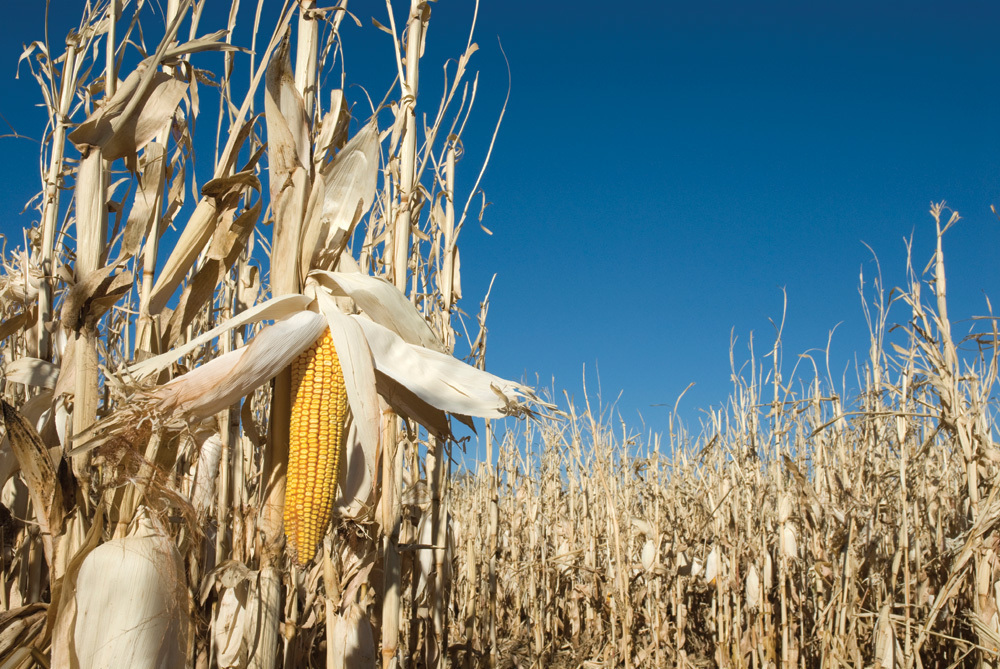Significant progress made, but urgent action continues to be needed with 16 million people facing severe levels of acute food insecurity and 1.6 million children acutely malnourished in Bangladesh [EN/BN] – ReliefWeb
![Significant progress made, but urgent action continues to be needed with 16 million people facing severe levels of acute food insecurity and 1.6 million children acutely malnourished in Bangladesh [EN/BN] – ReliefWeb](https://reliefweb.int/sites/default/files/styles/large/public/previews/31/9e/319ed978-b5f5-4b6d-9b3d-e530da6422ec.png?#)
Report on Acute Food Insecurity and Malnutrition in Bangladesh: A 2025 Analysis
Executive Summary: Alignment with Sustainable Development Goals
A 2025 analysis conducted by the Government of Bangladesh and development partners reveals a significant challenge to the nation’s progress towards the Sustainable Development Goals (SDGs), particularly SDG 2 (Zero Hunger). The report finds that 16 million people face severe acute food insecurity, and 1.6 million children are acutely malnourished. These findings underscore the urgent need for multi-sectoral action, reflecting the principles of SDG 17 (Partnerships for the Goals), to address the interconnected challenges of poverty (SDG 1), health (SDG 3), and climate change (SDG 13).
Integrated Food Security Phase Classification (IPC) Findings for 2025
Overall Food Insecurity Levels
The IPC analysis, conducted in April 2025, projects that between May and December 2025, an estimated 16 million people will face Crisis (IPC Phase 3) or worse levels of food insecurity. This represents 17 percent of the 96 million people analyzed. This situation directly impedes the achievement of SDG 2 targets related to ending hunger and ensuring access to safe, nutritious food.
- Crisis (IPC Phase 3) or worse: 16 million people
- Emergency (IPC Phase 4): 361,000 people requiring urgent humanitarian assistance
While this is an improvement from the 23.5 million people identified in 2024, sustained and strengthened efforts are critical to ensure lasting progress towards SDG 2.
Geographic and Demographic Vulnerabilities: A Challenge to SDG 10
The analysis highlights significant regional disparities, a key concern for SDG 10 (Reduced Inequalities). Certain populations bear a disproportionate burden of food insecurity.
- Cox’s Bazar: The highest incidence was observed here, with 30 percent of the population in IPC Phase 3, affecting both host communities and Rohingya refugees.
- Other High-Risk Districts: Approximately 25 percent of the population in Sunamganj, Barguna, Bandarban, Noakhali, and Satkhira are classified in IPC Phase 3.
- Rohingya Refugees: An estimated 445,692 refugees (40 percent of the analyzed refugee population) face Crisis (IPC Phase 3) or worse conditions, linking food insecurity to challenges addressed by SDG 16 (Peace, Justice and Strong Institutions).
The Acute Malnutrition Crisis: Impact on SDG 3 and SDG 5
Child and Maternal Malnutrition
The report details a severe nutrition crisis, directly impacting SDG 3 (Good Health and Well-being) by threatening child survival and development. The specific vulnerability of pregnant and breastfeeding women also highlights challenges related to SDG 5 (Gender Equality).
- Children (6–59 months): 1.6 million are expected to suffer from acute malnutrition in 2025.
- Severe Acute Malnutrition (SAM): Nearly 144,000 cases.
- Moderate Acute Malnutrition (MAM): Approximately 1.4 million cases.
- Pregnant and Breastfeeding Women: Nearly 117,000 are expected to suffer from acute malnutrition.
Key Drivers of Food Insecurity and Malnutrition
Interconnected Challenges to Sustainable Development
The drivers identified in the report are directly linked to several SDGs, demonstrating the interconnected nature of the 2030 Agenda.
- Climatic Shocks: Widespread flooding in 2024 severely disrupted livelihoods, underscoring the need for resilience and action as outlined in SDG 13 (Climate Action).
- Economic Shocks: Persistent inflation and market volatility have weakened purchasing power, exacerbating poverty and hindering progress on SDG 1 (No Poverty).
- Humanitarian Factors: Funding cuts combined with increased needs among the Rohingya population strain response capacities, impacting the ability to deliver on multiple goals.
Recommendations for Coordinated Action
A Roadmap Aligned with the SDGs
The report’s recommendations provide a strategic framework for action, leveraging the collaborative spirit of SDG 17 to advance multiple goals simultaneously.
- Deliver Life-Saving Humanitarian Assistance: Immediately address the needs of populations in Emergency (IPC Phase 4) conditions to meet the most urgent targets of SDG 2.
- Expand Shock-Responsive Social Safety Nets: Strengthen systems to protect vulnerable groups from economic and climate shocks, contributing to SDG 1 and SDG 10.
- Provide Emergency Agricultural and Livestock Support: Restore food production capacity for communities dependent on agriculture and fisheries, promoting sustainable practices in line with SDG 2.
- Support Livelihood Restoration: Implement programs, especially in flood-affected areas, to build long-term economic resilience and reduce poverty, directly supporting SDG 1 and SDG 13.
Analysis of Sustainable Development Goals in the Article
1. Which SDGs are addressed or connected to the issues highlighted in the article?
The article primarily addresses issues related to hunger, malnutrition, health, and collaborative efforts, which directly connect to several Sustainable Development Goals (SDGs). The main SDGs identified are:
- SDG 2: Zero Hunger: This is the central theme of the article. The text focuses entirely on acute food insecurity and malnutrition affecting millions of people in Bangladesh, which is the core mandate of SDG 2.
- SDG 3: Good Health and Well-being: The article highlights the severe health implications of food insecurity, particularly for vulnerable groups. The mention of “1.6 million children are acutely malnourished” and the life-threatening nature of Severe Acute Malnutrition (SAM) directly links the issue to health outcomes.
- SDG 17: Partnerships for the Goals: The article repeatedly emphasizes the collaborative approach taken to address the crisis. It describes a partnership involving the “Government of Bangladesh,” “UN agencies (FAO, UNICEF, and WFP),” and “non-governmental organizations Action Against Hunger and Save the Children,” which is the essence of SDG 17.
2. What specific targets under those SDGs can be identified based on the article’s content?
Based on the specific problems and solutions discussed, the following targets can be identified:
- Target 2.1: End hunger and ensure access to safe, nutritious and sufficient food. The article directly addresses this target by reporting that “16 million people are facing severe levels of acute food insecurity” and that 361,000 people require “urgent humanitarian assistance to meet their basic food needs.”
- Target 2.2: End all forms of malnutrition. This target is explicitly relevant, as the article details that “1.6 million children are suffering or expected to suffer from acute malnutrition” and “nearly 117,000 pregnant and breastfeeding women are expected to suffer from acute malnutrition.”
- Target 3.2: End preventable deaths of newborns and children under 5 years of age. The report’s focus on “Severe Acute Malnutrition (SAM), a life-threatening condition that requires immediate intervention,” directly connects the malnutrition crisis to the risk of child mortality, which this target aims to prevent.
- Target 17.16: Enhance the global partnership for sustainable development, complemented by multi-stakeholder partnerships. The article is a clear example of this target in action, describing how the “Government and development partners” convened a “multi-sectoral and multi-stakeholder workshop” to disseminate findings and coordinate a response.
3. Are there any indicators mentioned or implied in the article that can be used to measure progress towards the identified targets?
Yes, the article provides specific data and methodologies that serve as indicators for measuring progress:
- For Target 2.1: The article uses the Integrated Food Security Phase Classification (IPC) as a key measurement tool. The indicators are the number and percentage of the population in different IPC phases. For example, “16 million people… are projected to face Crisis (IPC Phase 3) or worse” and “30 percent of the population [in Cox’s Bazar] classified in IPC Phase 3.” These figures can be tracked over time to measure progress.
- For Target 2.2: The article provides direct quantitative indicators for malnutrition. These include the number of children suffering from acute malnutrition (“1.6 million”), the number of Severe Acute Malnutrition (SAM) cases (“nearly 144,000”), and the number of pregnant and breastfeeding women suffering from acute malnutrition (“nearly 117,000”). These numbers serve as a baseline to measure future improvements.
- For Target 17.16: While not a quantitative metric, the existence and functioning of the partnership itself is an indicator. The article points to the collaborative production of the “latest national analysis on acute food insecurity and acute malnutrition” and the convening of the “multi-sectoral and multi-stakeholder workshop” as evidence of an active and effective partnership.
4. Summary Table of SDGs, Targets, and Indicators
| SDGs | Targets | Indicators |
|---|---|---|
| SDG 2: Zero Hunger | 2.1: By 2030, end hunger and ensure access by all people… to safe, nutritious and sufficient food all year round. | Number and percentage of the population facing Crisis (IPC Phase 3) or worse levels of food insecurity (e.g., 16 million people, or 17% of the analyzed population). |
| 2.2: By 2030, end all forms of malnutrition… and address the nutritional needs of… pregnant and lactating women. | Number of children (6-59 months) with acute malnutrition (1.6 million), including Severe Acute Malnutrition (144,000) and Moderate Acute Malnutrition (1.4 million). Number of pregnant and breastfeeding women with acute malnutrition (117,000). | |
| SDG 3: Good Health and Well-being | 3.2: By 2030, end preventable deaths of newborns and children under 5 years of age. | Number of cases of Severe Acute Malnutrition (SAM), described as a “life-threatening condition” (144,000 cases). |
| SDG 17: Partnerships for the Goals | 17.16: Enhance the global partnership for sustainable development, complemented by multi-stakeholder partnerships. | The existence of a functioning multi-stakeholder collaboration involving the Government of Bangladesh, UN agencies (FAO, UNICEF, WFP), and NGOs (Action Against Hunger, Save the Children) to produce the IPC analysis and coordinate action. |
Source: reliefweb.int
What is Your Reaction?
 Like
0
Like
0
 Dislike
0
Dislike
0
 Love
0
Love
0
 Funny
0
Funny
0
 Angry
0
Angry
0
 Sad
0
Sad
0
 Wow
0
Wow
0













































































